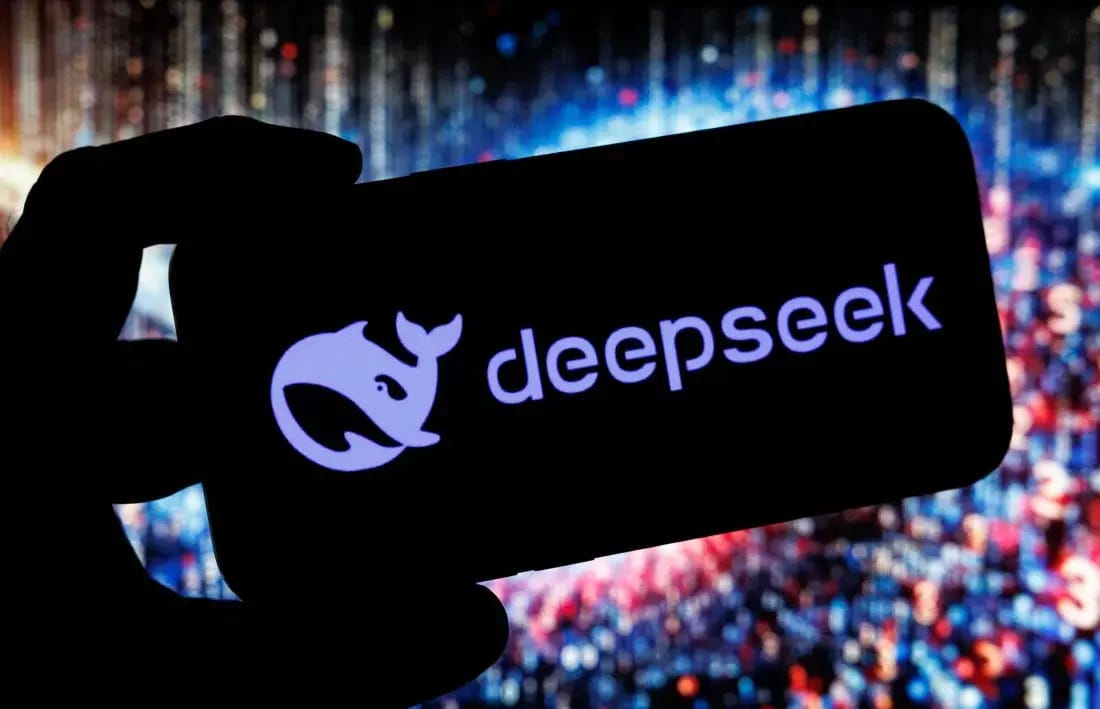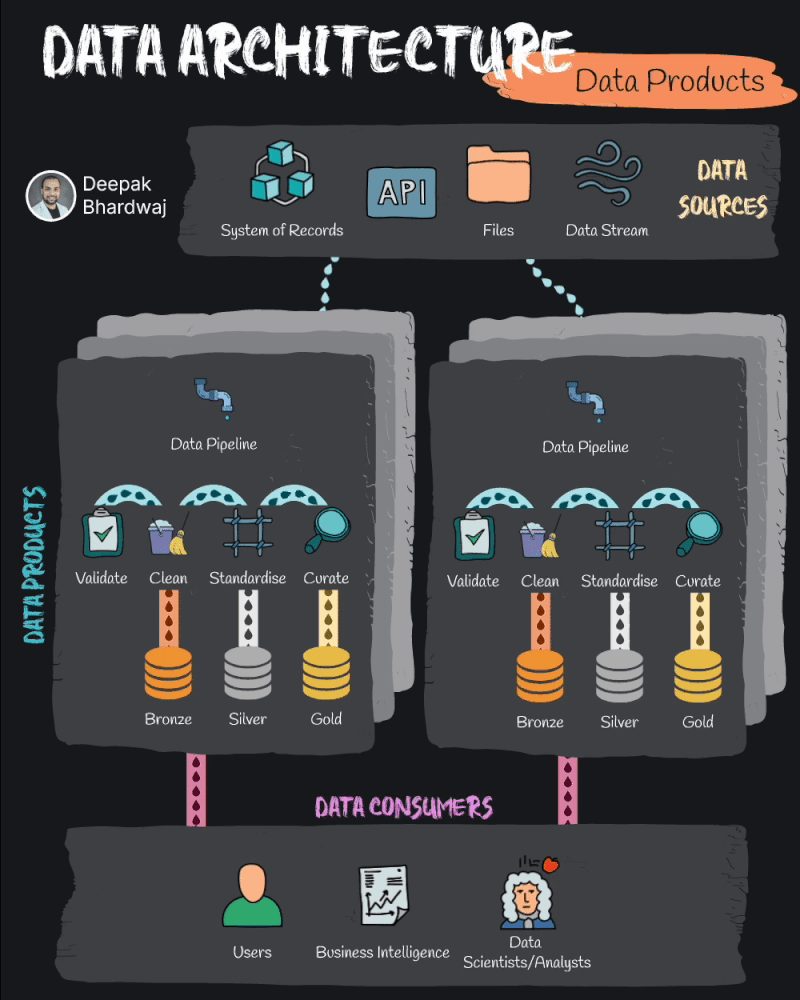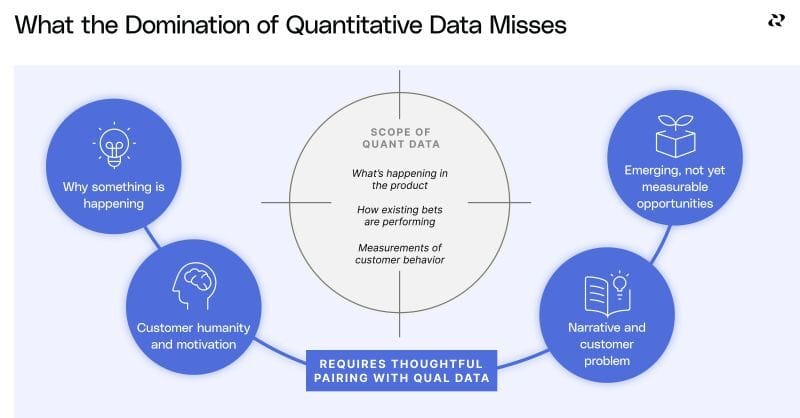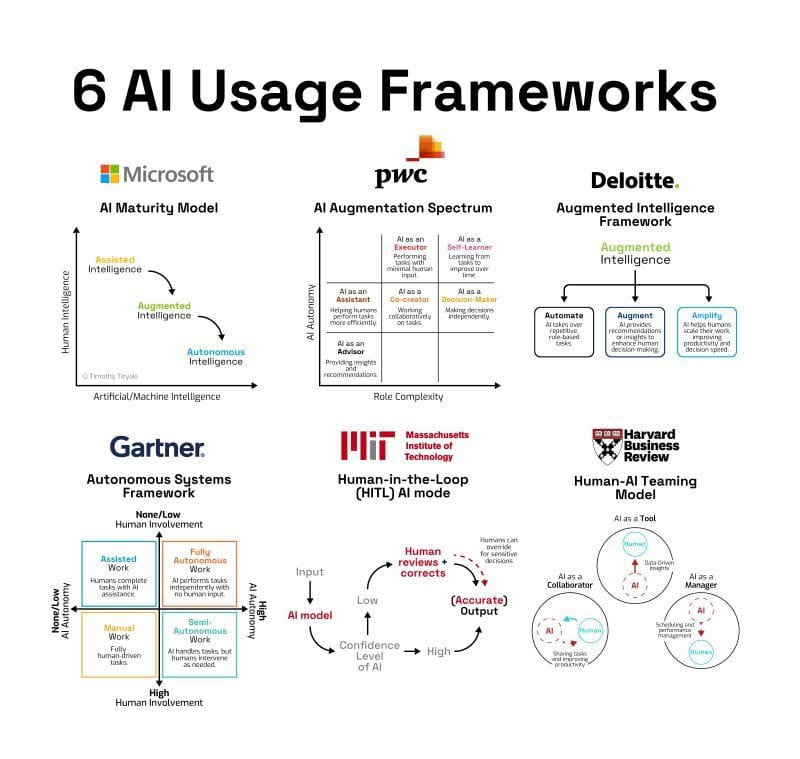8 bits for a Byte: Welcome to this week’s edition. China’s DeepSeek is proving why AI leadership isn’t just about algorithms—it’s about access to compute. The U.S. is tightening its grip on AI chips, Europe is redefining AI governance, and businesses are scrambling to deploy AI-powered data and voice agents. The next two years will determine who dominates AI. Will your business ride the wave or get left behind? Read on for the must-know insights shaping the future of AI!
Your Breakfast Is Holding You Back
Coffee alone isn’t breakfast.
For lasting energy, peak performance, and real health benefits, your body needs more than just empty calories. That’s where Huel Black Edition steps in. Packed with 40g of protein and 27 essential vitamins, it’s the ultimate high-protein meal, ready in just 30 seconds.
Start fueling your day the right way. Use code BEHUEL15 for 15% off your first order, plus a FREE t-shirt and shaker.

Let’s Get To It!

Welcome, To 8 bits for a Byte!
Here's what caught my eye in the world of AI this week:
DeepSeek, AI Export Controls, and the Future of Global AI Leadership
As a follow-up to our Special Edition on DeepSeek, Dario Amodei, CEO of Anthropic, wrote a very interesting post which is a must-read.
The rise of DeepSeek, a Chinese AI company that has achieved near-frontier AI performance at lower costs, has sparked debate over U.S. export controls on AI chips. While some argue that these restrictions have failed, the reality is the opposite: DeepSeek’s progress proves why strong and well-enforced controls are more critical than ever. The real battle isn’t about stopping China from making AI advances—it’s about ensuring the U.S. and its allies maintain a long-term strategic lead in AI development.
🔑 Key Takeaways:
🔹 Scaling, Efficiency & Paradigm Shifts Are Driving AI Progress
AI models improve predictably with more compute—DeepSeek’s efficiency gains don’t represent a fundamental breakthrough but rather expected cost reductions in AI development.
The next phase of AI evolution—reinforcement learning-driven reasoning—is still in its early days, meaning DeepSeek's advantage is temporary.
.
🔹 DeepSeek’s Progress Follows the Expected Cost Curve
Contrary to headlines, DeepSeek hasn’t "leapfrogged" U.S. AI companies—it has merely reached a predictable cost-efficiency milestone that U.S. labs will soon surpass.
The real geopolitical significance is that for the first time, China—not the U.S.—was first to demonstrate an expected cost reduction trend.
.
🔹 Export Controls Are Working—And Need to Be Strengthened
The real AI arms race begins in 2026-2027, when training "superintelligent AI" will require millions of chips and billions of dollars.
The U.S. will have the chips—China might not. If export controls hold, the U.S. and its allies could secure a long-term AI leadership advantage.
DeepSeek’s chip access comes from a mix of pre-ban shipments, legally allowed chips (H20s), and likely smuggling—showing that controls are closing gaps but need to be tighter.
Bottom Line:
DeepSeek’s rise doesn’t undermine U.S. export controls—it reinforces their necessity. If the U.S. wants to maintain dominance in AI and prevent authoritarian regimes from gaining military AI superiority, it must double down on restricting China’s access to cutting-edge AI chips. The AI race is just beginning, and the most critical battles will be fought over compute access.

Join thousands of satisfied readers and get our expertly curated selection of top newsletters delivered to you. Subscribe now for free and never miss out on the best content across the web!

Quote of the week
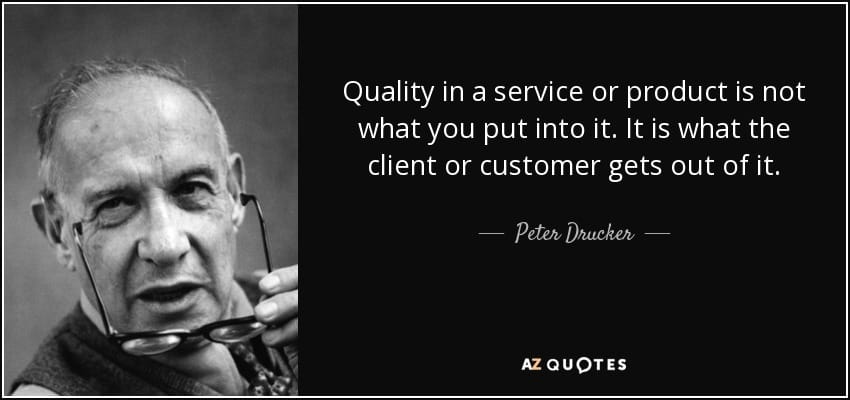
Drop the mic. Nothing else I can say.

In the 21st century, the true masters of AI will not be those who simply collect data—but those who wield it as a strategic asset. The enterprises that treat data as a product, not a byproduct, will rise as the dominant forces in their industries.
Too many organizations drown in raw data, failing to harness its full power. The key to AI-driven success lies in transforming data into a well-governed, user-centric, and scalable product that fuels decision-making, automation, and competitive advantage.
Three Jedi Truths for Data Mastery
1️⃣ The Force of Data as a Product: Precision, Power & Purpose
Data must be curated, governed, and delivered with intent—just like a premium product.
Organizations must move beyond mere data storage and create high-value, accessible insights that drive action.
2️⃣ The Path of the Data Mesh: Decentralized & Scalable
Centralized data silos are relics of the past; the future belongs to distributed, self-service data products.
Data must be democratized—accessible to those who need it, in the right format, at the right time.
3️⃣ From Raw Data to Intelligent Action: The AI-Driven Advantage
Customer intelligence fuels hyper-personalization.
Predictive analytics sharpen decision-making and foresight.
Risk assessment models strengthen financial stability and resilience.
To lead and win in the AI era, enterprises must master the discipline of data productization. Those who do will not just compete—they will dominate. The future belongs to those who wield data as their ultimate strategic weapon.

For years, product and growth teams have been laser-focused on quantitative data—A/B tests, dashboards, and endless metrics. But here’s the problem: what without the why is meaningless. We’ve swung too far into numbers, losing sight of customer motivations, frustrations, and unmet needs.
That’s why it’s exciting to see Reforge calling out the real secret sauce: blending quant with qualitative. Metrics alone tell you what’s happening, but true innovation happens when you understand why. Historically, qualitative data was too slow, expensive, and high-friction—but AI is changing the game. The future belongs to teams who integrate AI-powered qualitative insights with hard data to unlock better decisions, breakthrough ideas, and deeper customer connections.
🔑 Three Key Takeaways
1️⃣ The What Without the Why = Blind Spots
Over-reliance on metrics dehumanizes product development, making customers just data points instead of people.
Companies obsessed with numbers risk missing the emerging opportunities that can’t yet be measured.
2️⃣ AI is Supercharging Qualitative Data
Historically, qualitative data was too slow, costly, and difficult to scale—but AI is removing these barriers.
AI now makes it possible to seamlessly combine quant insights with customer-driven qualitative feedback.
3️⃣ The Future of Product is Quant + Qual
The most impactful products and growth strategies come from understanding both behaviors and motivations.
Teams that merge the analytical power of data with the emotional intelligence of customer insights will win the market.
Reforge is leading the charge in bringing back balance—because the real magic happens at the intersection of data and human insight.

Your Voice AI Agent, Just a Few Clicks Away
Need a calling assistant that handles routine tasks like lead qualification and booking appointments 24/7? Synthflow has you covered with a library of pre-tested AI Agent templates tailored to industries like real estate, healthcare, and more. These ready-made solutions let you launch quickly—and if you’re feeling innovative, you can design and sell your own templates to earn extra income!

.
The European Union is charging forward with its AI Act, the most ambitious AI regulation in the world, putting Silicon Valley on edge. The law bans risky AI applications—like social scoring—and slaps non-compliant companies with massive fines or even an EU ban. While Brussels claims it’s fostering responsible AI innovation, Meta and other tech giants argue that overregulation will cripple investment.
.
The challenge? Overregulation can stifle innovation—making AI development slow, expensive, and cumbersome. Ironically, companies that have previously ignored ethical concerns—like OpenAI leveraging the Internet as its private content warehouse—have seen the most success. Meanwhile, companies that play by the rules are facing tighter restrictions and penalties. The silver lining? Advances in synthetic data are improving daily, but quality content remains king—and highly sought after. With the current administration, expect aggressive moves where the ends justify the means.
.
🔑 Key Takeaways:
.
The AI Act Raises the Bar for Global AI Regulation
The EU’s AI Act enforces strict compliance measures, including bans on high-risk AI and steep penalties for violations.
Over the next two years, tougher rules will be rolled out, especially for large AI models like ChatGPT.
Tech Giants Push Back Against EU Oversight
Meta and other U.S. firms warn that Europe’s heavy-handed regulations will stifle innovation.
The EU faces criticism for trying to be both a tech leader and an aggressive regulator, straining relations with Silicon Valley.
.
Geopolitical Tensions Are Heating Up
Trump’s threats of retaliation add uncertainty, as Brussels reevaluates its broader tech and trade policies.
With global AI leadership, digital markets, and security at stake, the EU must find a way to regulate without crushing investment or sparking conflict.
.Bottom Line:
The EU’s AI Act is a bold step toward shaping responsible AI, but it risks alienating U.S. tech giants and igniting political battles. The real question: Will regulations favor those who follow the rules, or will rule-breakers continue to gain an unfair advantage? The AI power struggle has only just begun.


Sunday Funnies 🤣

AI is evolving faster than its adoption—leaving many organizations scrambling to keep up. To help leaders navigate this shift, these six powerful AI usage frameworks offer structured ways to integrate AI into business strategy, operations, and decision-making.
1️⃣ Microsoft’s AI Maturity Model
Defines AI adoption in three stages, based on the level of human involvement:
✔ Assisted Intelligence – AI provides insights, but humans make decisions.
✔ Augmented Intelligence – AI enhances human decision-making and creativity.
✔ Autonomous Intelligence – AI operates independently, making decisions without human input.
2️⃣ PwC’s AI Augmentation Spectrum
Highlights six levels of human-AI collaboration:
✔ AI as an Advisor – Providing insights and recommendations.
✔ AI as an Assistant – Helping humans perform tasks efficiently.
✔ AI as a Co-Creator – Collaborating on tasks.
✔ AI as an Executor – Performing tasks with minimal human input.
✔ AI as a Decision-Maker – Making independent decisions.
✔ AI as a Self-Learner – Improving autonomously over time.
3️⃣ Deloitte's Augmented Intelligence Framework
Focuses on AI’s role in enhancing human work:
✔ Automate – AI handles repetitive, rule-based tasks.
✔ Augment – AI provides recommendations or insights.
✔ Amplify – AI scales human work, improving speed and productivity.
4️⃣ Gartner’s Autonomous Systems Framework
Classifies work based on AI’s role in task execution:
✔ Manual Work – Fully human-driven.
✔ Assisted Work – AI provides support.
✔ Semi-Autonomous Work – AI executes, but humans intervene as needed.
✔ Fully Autonomous Work – AI operates independently.
5️⃣ MIT’s Human-in-the-Loop AI Model
Ensures humans remain central to AI decision-making:
✔ AI Automation – Fully automated tasks.
✔ Human-in-the-Loop – Humans validate or refine AI outputs.
✔ Human Override – Humans have the final say in sensitive areas.
6️⃣ HBR's Human-AI Teaming Model
Frames AI as a collaborative partner, not a replacement:
✔ AI as a Tool – Supports human decision-making.
✔ AI as a Collaborator – Shares tasks, boosting efficiency.
✔ AI as a Manager – Handles scheduling, performance tracking, etc.
AI is advancing faster than organizations are adopting it—these frameworks can help spark more meaningful conversations and guide a smarter AI adoption strategy.

There’s a reason 400,000 professionals read this daily.
Join The AI Report, trusted by 400,000+ professionals at Google, Microsoft, and OpenAI. Get daily insights, tools, and strategies to master practical AI skills that drive results.

2024 was a breakout year for AI voice agents, with massive breakthroughs in model reliability, latency, and emotional nuance. Voice AI is now nearly indistinguishable from humans, enabling automation in industries where phone calls are critical. As a result, there has been an explosion of startups—Y Combinator alone has 90+ voice agent companies, many targeting high-value verticals like home services, healthcare, and customer support.
Where the Opportunity Lies in 2025:
Voice is a Wedge, Not the Product
Success lies in integrating voice AI into broader workflows—like CRM automation, appointment scheduling, and follow-ups.
Winning Use Cases for Voice AI Startups
Industries where the phone is the dominant channel (home services, medical, recruiting).
Calls with structured formats and clear outcomes (scheduling, sales, or support).
Massive cost savings (50%+ vs. human reps) with equal or better performance.
Mission-critical calls—businesses will pay a premium to ensure they happen.
The Competitive Edge in Voice AI
SMB & mid-market: Easy plug-and-play integration wins.
Enterprise: Complex integrations can be a moat, creating stickiness and defensibility.
AI voice agents are no longer a futuristic concept—they're here, and they're transforming industries where phone interactions drive revenue and efficiency. The real winners in this space won’t just replace human calls but will seamlessly integrate into business workflows, cut costs by 50%+, and deliver real ROI. With massive VC interest and accelerating adoption, 2025 is the year to build and scale. If you’re in this space, now is the time to execute, differentiate, and dominate.

Until next time, take it one bit at a time!
Rob
Thank you for scrolling all the way to the end! A POWER bonus for y’all.
The Power Problem of AI—and Its Brilliant Solutions
AI is revolutionizing industries, but its energy consumption is skyrocketing at an unsustainable pace. The reliance on GPUs—power-hungry yet essential for AI training—poses an energy crisis. However, cutting-edge innovations in neuromorphic and optical computing offer game-changing alternatives that could make AI far more efficient. Meanwhile, a strategic shift toward smaller, specialized AI models is already making waves, proving that smarter—not bigger—is the way forward.
🔑 Key Takeaways:
🔹 AI’s Energy Appetite Is Out of Control – AI model training is consuming vast amounts of electricity, contributing to climate change and raising concerns about sustainability. GPUs, the backbone of AI training, are both incredibly powerful and incredibly power-hungry.
🔹 Next-Gen Computing Is the Future – Brain-inspired neuromorphic chips promise ultra-efficient AI training, while optical computing, powered by photons could revolutionize speed and energy efficiency. These emerging technologies could dramatically cut AI’s power footprint.
🔹 Smaller Models, Bigger Impact – The industry is shifting towards smaller, fine-tuned models that perform just as well as—or even better than—larger models while using a fraction of the energy. This trend is already shaping the next generation of AI innovation.
🚀 What’s Next? Stay ahead by keeping an eye on sustainable AI trends. If you're an AI leader, consider exploring energy-efficient architectures and leveraging smaller, domain-specific models to maximize performance while minimizing power consumption. The future of AI is not just smarter—it’s greener!





